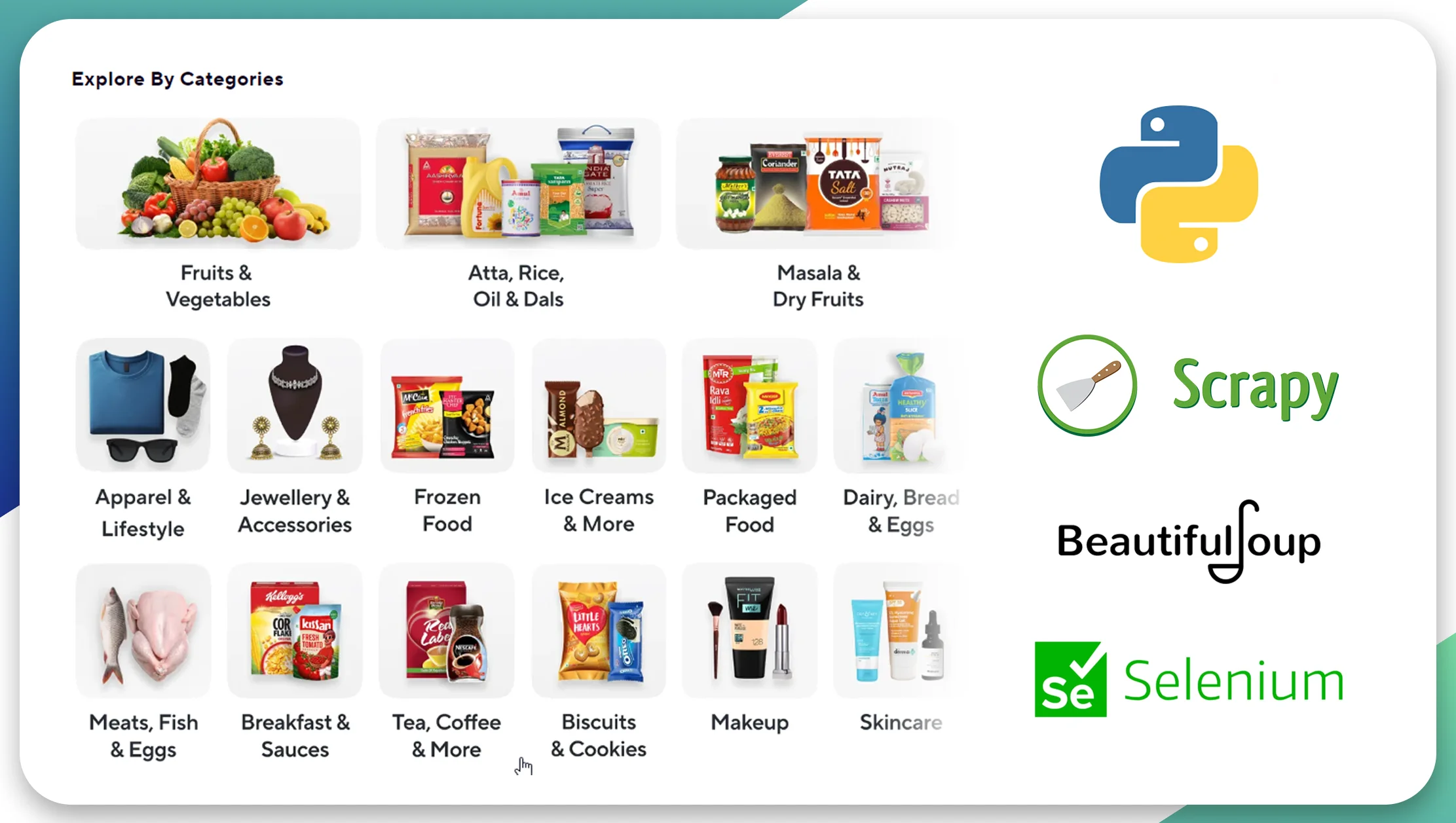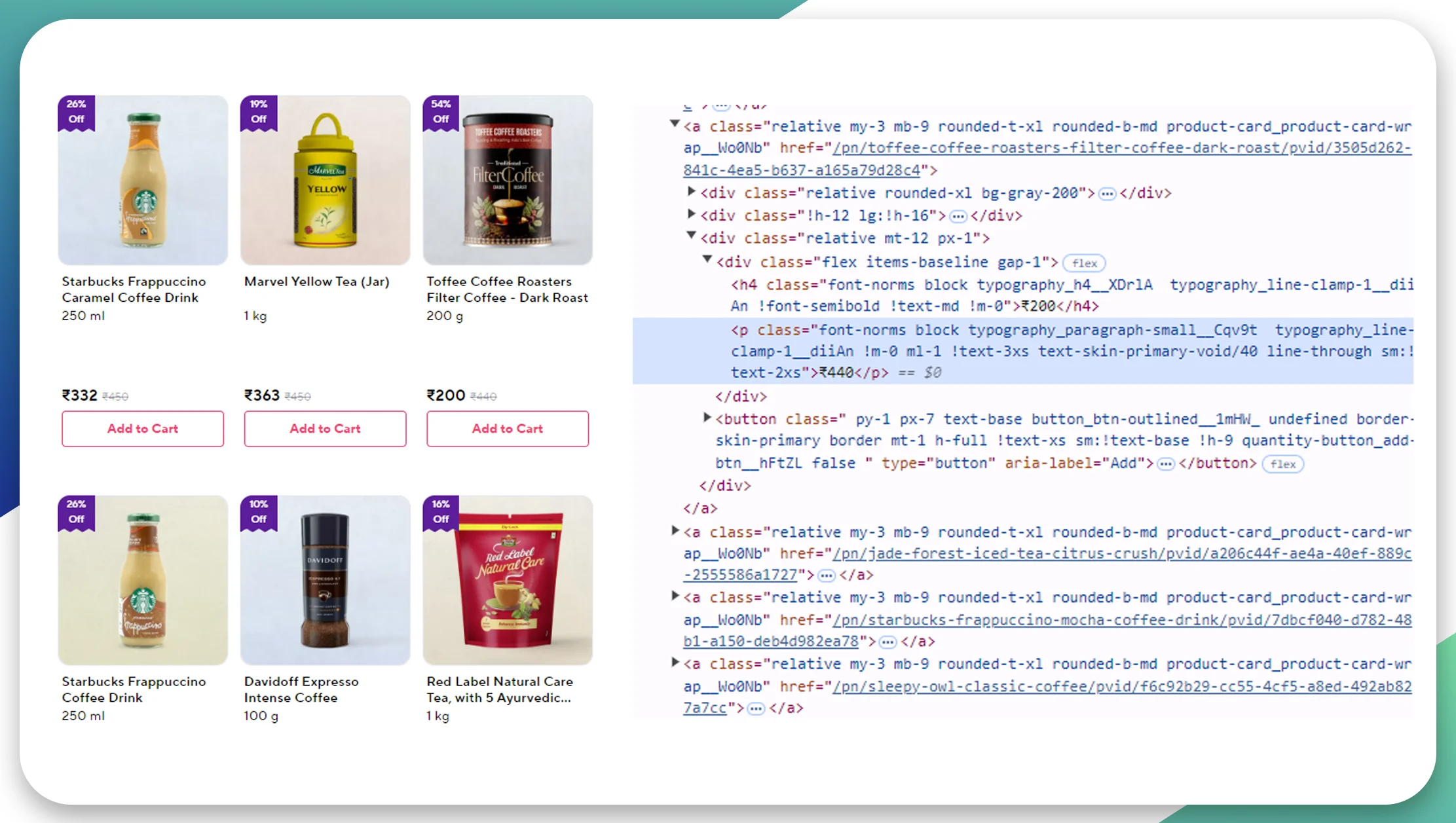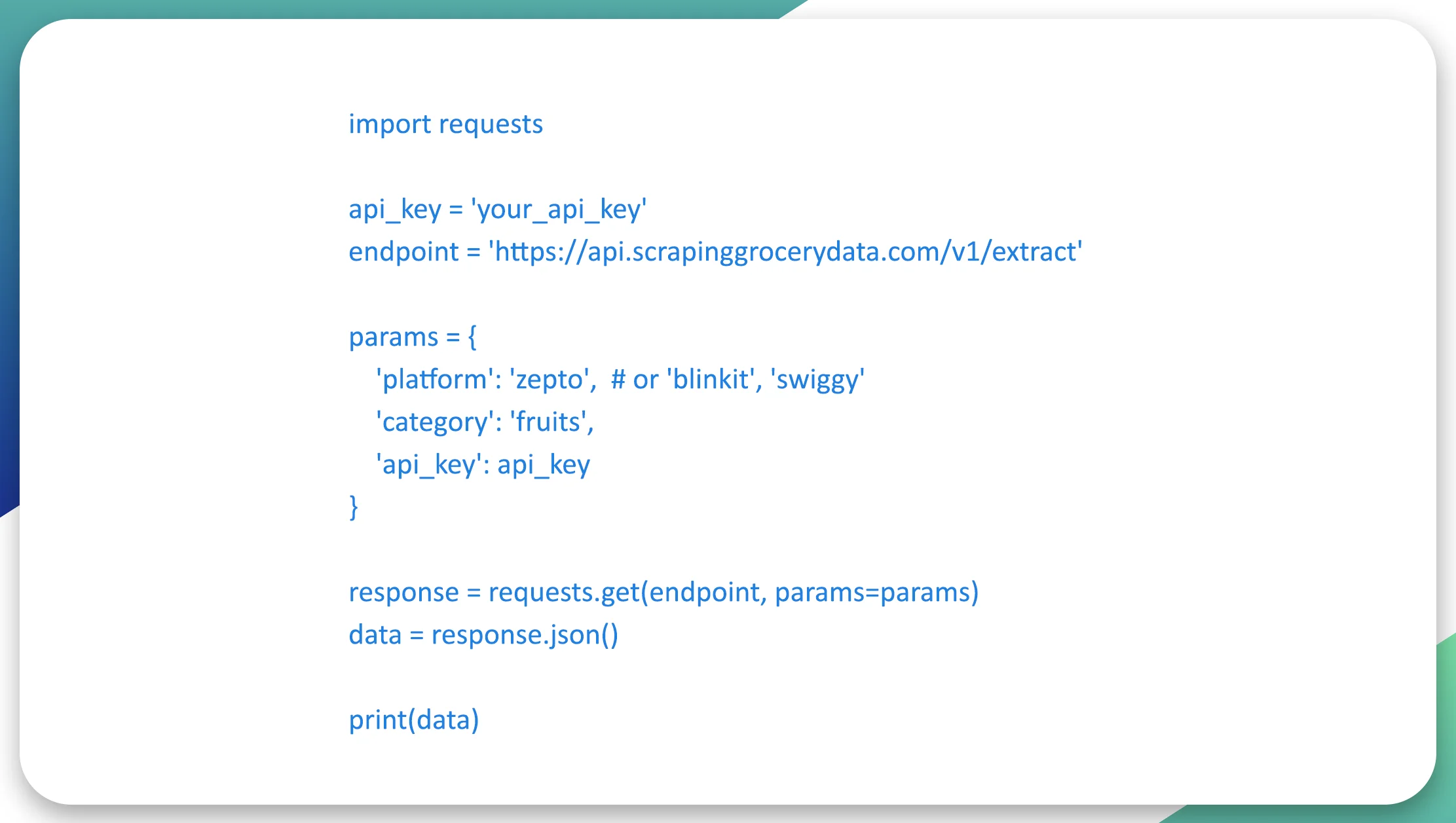

Introduction
In the fast-paced world of online grocery delivery, having access to real-time data is crucial for businesses to stay competitive and meet consumer demands. Platforms like Zepto, Blinkit, and Swiggy Instamart are leading the charge in the Indian market, offering quick and convenient grocery delivery services. To gain a competitive edge and understand market dynamics, leveraging a scraping groceries data API is essential. This blog will guide you through the process of using such an API to extract valuable data from these platforms, providing insights into market trends, customer preferences, and operational efficiencies.
Why Use a Scraping Groceries Data API?

Before diving into the technical aspects, it’s important to understand the benefits to scrape groceries data API:
Market Insights: Access to real-time data helps identify market trends and consumer preferences, enabling better decision-making.
Competitive Analysis: Understanding competitors’ pricing strategies, product offerings, and customer reviews can provide a significant competitive advantage.
Operational Efficiency: Data on delivery times, order frequencies, and geographical demand can help optimize logistics and improve service delivery.
Customer Satisfaction: Analyzing customer reviews and feedback can help improve products and services, leading to higher customer satisfaction and loyalty.
Latest Statistics on Online Grocery Delivery

To underscore the importance of this data, here are some recent statistics on the online grocery delivery market in India:
Market Size: The online grocery market in India is projected to grow from $2.9 billion in 2020 to $18.2 billion by 2024, at a CAGR of 57%.
User Growth: The number of users ordering groceries online is expected to reach 160 million by 2024.
Zepto: Founded in 2021, Zepto has quickly gained traction, offering 10-minute delivery services and raising $100 million in its Series C funding round.
Blinkit: Formerly known as Grofers, Blinkit rebranded in 2021 and focuses on quick commerce, promising delivery within 10-20 minutes.
Swiggy Instamart: Launched in 2020, Swiggy Instamart is expanding rapidly and aims to become a major player in the quick commerce segment.
Setting Up Your Environment

To get started with scraping groceries data from Zepto, Blinkit API, and Swiggy Instamart, you'll need the following tools and libraries:
Python: A versatile programming language widely used for web scraping.
Requests: A Python library for making HTTP requests.
BeautifulSoup: A Python library for parsing HTML and XML documents.
Selenium: A tool for automating web browsers, useful for scraping dynamic content.
Pandas: A data manipulation library for organizing scraped data.
Install the required libraries using pip:
pip install requests beautifulsoup4 selenium pandasUsing a Scraping Groceries Data API

An extract groceries data API simplifies the process of Groceries Data API Extraction by providing a structured and consistent way to access data. Here's how you can use such an API to scrape data from Zepto, Blinkit, and Swiggy Instamart.
Step 1: Access the API
First, obtain access to a scrape groceries data API. This could be a third-party service that provides endpoints for extracting data from various grocery delivery platforms. Ensure you have the necessary API keys and authentication tokens.
Step 2: Define Your Data Requirements

Determine what data you need to extract. Common data points include:
- Product names
- Prices
- Availability
- Delivery times
- Customer reviews
- Ratings
Step 3: Make API Requests
Use the requests library to make API calls and retrieve data. Here’s a basic example of how to make an API request:

Step 4: Parse and Organize the Data
Once you have the data, use BeautifulSoup and Pandas to parse and organize it:

Step 5: Store and Analyze the Data
Store the data in a CSV file or a database for further analysis:

Example Use Case: Competitive Analysis
Let's walk through an example use case: performing a competitive analysis on the pricing of fresh fruits across Zepto, Blinkit, and Swiggy Instamart.
Step 1: Extract Data
Use extract groceries data API to extract product and pricing data from each platform:

Step 2: Organize Data
Organize the data into a single DataFrame for comparison:

Step 3: Analyze Data
Perform analysis to compare prices and availability:

Best Practices for Using a Scraping Groceries Data API
1. Adhere to Legal and Ethical Guidelines
Always ensure that your groceries data API collection practices comply with legal and ethical standards. Respect the terms of service of the platforms you are scraping and avoid overloading their servers with too many requests.
2. Handle Dynamic Content
Platforms like Zepto, Blinkit, and Swiggy Instamart may use dynamic content that requires handling JavaScript rendering. Tools like Selenium can help automate and scrape such content effectively.
3. Manage Data Quality
Ensure the data you extract is clean and accurate. Implement data validation checks and handle missing or inconsistent data appropriately.
4. Optimize API Calls
To avoid hitting rate limits or incurring excessive costs, optimize your API calls by batching requests and using efficient groceries data API extraction techniques.
5. Stay Updated
The structure of websites and APIs can change frequently. Stay updated with any changes to the platforms you are scraping and adjust your scripts accordingly.
Conclusion
Using Real Data API for platforms like Zepto, Blinkit API, and Swiggy Instamart can provide invaluable insights into market trends
By implementing the techniques discussed in this blog, you can effectively scrape groceries data and harness its power for market insights and strategic decision-making. Start using Real Data API today to unlock the full potential of online grocery data for your business and stay ahead of the competition!
















